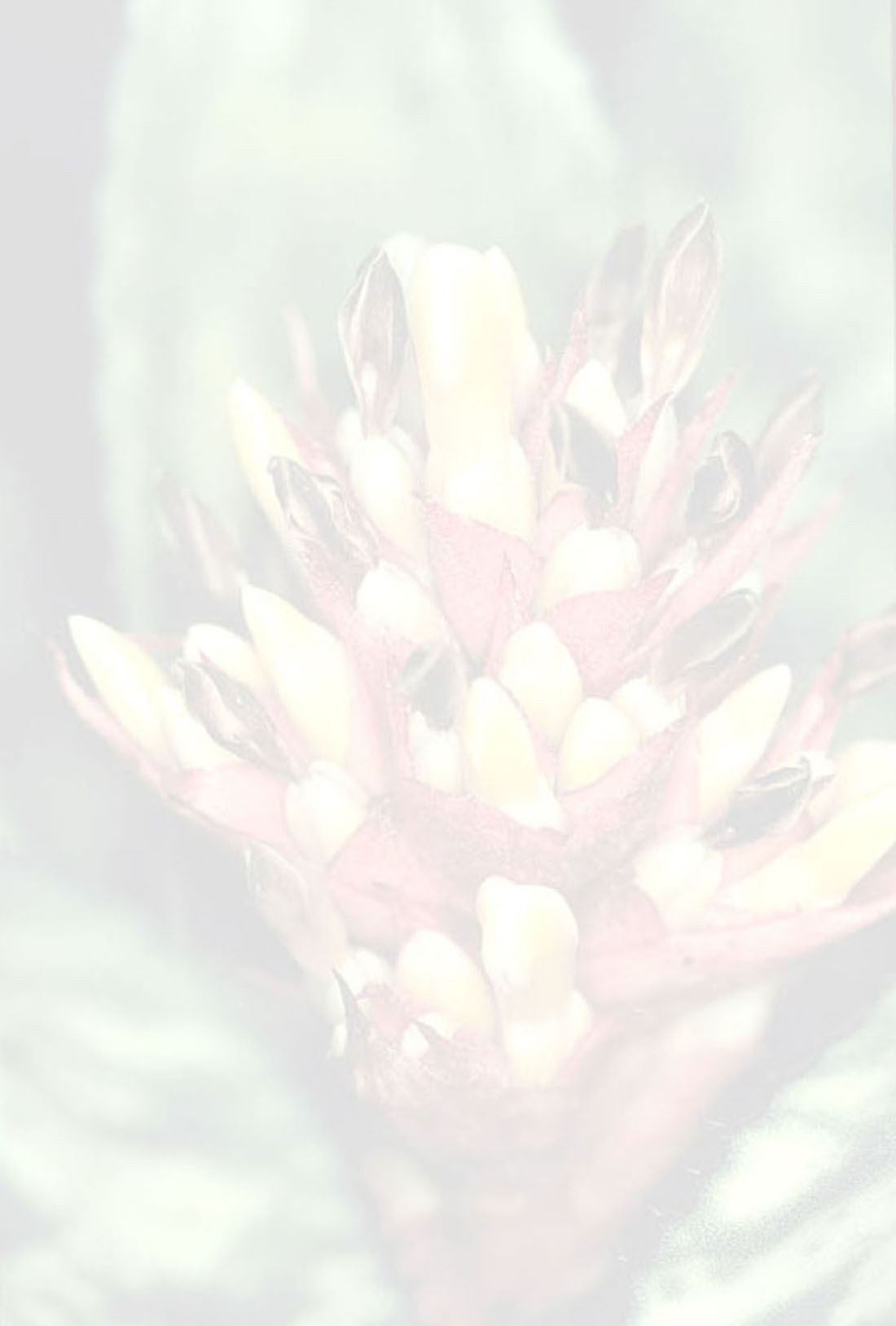Aechmea vanhoutteana (Van Houtte) Mez
Literature references:
*move your mouse pointer over the page numbers to see comment
Comments:
- Notes
First classified as Echinostachys vanhoutteana Van Houtte, later it was treated in the genus Quesnelia Gaudich. (Morren, 1881 ). Baker ( 1879) reduced the genus Echinostachys to Aechmea, but he treated this taxon as Quesnelia vanhoutteana (Van Houtte) E. Morren, near Q. rufa Gaudich. and Q. cayennensis Baker. The latter are currently synonyms of Q. quesneliana (Brongn.) L.B. Sm. Probably, Baker's opinion was based on the similarities shown by A. vanhoutteana and Q. quesneliana which have the same colours for the floral bracts and petals, the same thickness and arrangement for the scape bracts, and the same strobiliform inflorescence. Occasionally some herbarium material of A. vanhoutteana is incorrectly identified as Q. quesneliana. These two taxa are easily distinguished by the floral bracts apices that are acuminate in A. vanhoutteana and obtuse in Q. quesneliana. .
For Wittmack (1891), Echinostachys and Macrochordium (orthographic variant of Macrocordion) had genus status. He treated A. vanhoutteana as Macrochordium Van Houtteanum, probably due to the fact that the inflorescence of this taxon does not have the appearance of Echinus ( = sea-urchin) stachys ( = spike). A. vanhoutteana has a spineless inflorescence which is similar to the strobiliform inflorescence of the Macrochordion group.
Mez ( 1892) transferred this taxon to the genus Aechmea, and placed it in the subgenus Echinostachys between A. pineliana and A. alopecurus, before reducing Echinostachys to the subgenus Pothuava, and placing A. vanhoutteana into Pothuava (Mez, 1896). Although this classification is accepted here, a revision defining the limits between the genera Aechmea and Quesnelia and between the subgenera Pothuava and Macrocordion, may change the position of this taxon.
It appears that A. vanhoutteana is a montane plant and absent from coastal vegetation. Despite the confusion about Foster's collection no. l76-A (Leme, 1992), the number 176-A itself and the absence of leaves on the sheet suggest that this collection was probably first treated as a duplicate of another sheet. The sheet Foster 176 (A. lamarchei Mez) is from Domingos Martins, a mountainous place in Espirito Santo (Smith & Downs, 1979). A. vanhoutteana is an easily recognizable species. Only A. bocainensis has some similarities in the colour of bracts and flowers, although the shapes of floral bracts and sepals are very distinct for these two species. p. B J Linnean
- A. vanhoutteana is known from Rio de Janeiro, Sao Paulo and Minas Gerais and, doubtfully from Espirito Santo State (see notes). It is restricted to the Atlantic rain forest where growth is epiphytic, saxicolous, rupicolous and terrestrial, at altitudes between 800-1200 m. —See Bot. J. Linn. Soc.

